This is an old revision of this page, as edited by Soupforone (talk | contribs) at 19:23, 16 December 2016 (sultan w/o others - fix citekill - clarify non-ethnic origins per besteman - dna's uniparental). The present address (URL) is a permanent link to this revision, which may differ significantly from the current revision.
Revision as of 19:23, 16 December 2016 by Soupforone (talk | contribs) (sultan w/o others - fix citekill - clarify non-ethnic origins per besteman - dna's uniparental)(diff) ← Previous revision | Latest revision (diff) | Newer revision → (diff) This article is about the Somali ethnic group. For the general population of the Federal Republic of Somalia, see Demographics of Somalia. For other uses, see Somali (disambiguation).Ethnic group
| Total population | |
|---|---|
| c. 16–20 million | |
| Regions with significant populations | |
| Horn of Africa | |
| 9 million | |
| 4.6 million | |
| 2.4 million | |
| 524,000 | |
| 200,000 | |
| 150,000 | |
| 114,000 | |
| 85,700 | |
| 60,623 | |
| 50,000 | |
| 40,000 | |
| 40,143 | |
| 39,465 | |
| 20,688 | |
| 20,000 | |
| 17,871 | |
| 16,489 | |
| 10,131 | |
| 8,112 | |
| 6,570 | |
| 2,627 | |
| 2,000-3,000 | |
| 2,500 | |
| 1,617 | |
| 1,178 | |
| Languages | |
| Somali, Arabic | |
| Religion | |
| Islam (Sunni, Sufi) | |
| Related ethnic groups | |
Somalis (Template:Lang-so, Template:Lang-ar) are an ethnic group inhabiting the Horn of Africa (Somali Peninsula). The overwhelming majority of Somalis speak the Somali language, which is part of the Cushitic branch of the Afro-Asiatic family. They are predominantly Sunni Muslim. Ethnic Somalis number around 16-20 million and are principally concentrated in Somalia (around 9 million), Ethiopia (4.6 million), Kenya (2.4 million), and Djibouti (524,000). Expatriate Somalis are also found in parts of the Middle East, North America and Europe.
Etymology
Samaale, the oldest common ancestor of several Somali clans, is generally regarded as the source of the ethnonym Somali. The name "Somali" is, in turn, held to be derived from the words soo and maal, which together mean "go and milk" — a reference to the ubiquitous pastoralism of the Somali people. Another plausible etymology proposes that the term Somali is derived from the Arabic for "wealthy" (dhawamaal), again referring to Somali riches in livestock.
An Ancient Chinese document from the 9th century CE referred to the northern Somalia coast — which was then part of a broader region in Northeast Africa known as Barbara, in reference to the area's Berber (Hamitic) inhabitants — as Po-pa-li. The first clear written reference of the sobriquet Somali, however, dates back to the 15th century. During the wars between the Sultanate of Ifat based at Zeila and the Solomonic Dynasty, the Abyssinian Emperor had one of his court officials compose a hymn celebrating a military victory over the Sultan of Ifat's eponymous troops.
History
History of Somalia and Maritime history of Somalia
Ancient rock paintings, which date back 5000 years, have been found in the northern part of Somalia; these depict early life in the territory. The most famous of these is the Laas Geel complex, which contains some of the earliest known rock art on the African continent and features many elaborate pastoralist sketches of animal and human figures. In other places, such as the northern Dhambalin region, a depiction of a man on a horse is postulated as being one of the earliest known examples of a mounted huntsman.
Inscriptions have been found beneath many of the rock paintings, but archaeologists have so far been unable to decipher this form of ancient writing. During the Stone age, the Doian and Hargeisan cultures flourished here with their respective industries and factories.
The oldest evidence of burial customs in the Horn of Africa comes from cemeteries in Somalia dating back to 4th millennium BC. The stone implements from the Jalelo site in northern Somalia are said to be the most important link in evidence of the universality in palaeolithic times between the East and the West.
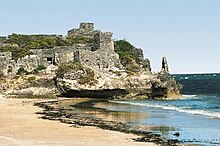
In antiquity, the ancestors of the Somali people were an important link in the Horn of Africa connecting the region's commerce with the rest of the ancient world. Somali sailors and merchants were the main suppliers of frankincense, myrrh and spices, items which were considered valuable luxuries by the Ancient Egyptians, Phoenicians, Mycenaeans and Babylonians.
According to most scholars, the ancient Land of Punt and its inhabitants formed part of the ethnogenesis of the Somali people. The ancient Puntites were a nation of people that had close relations with Pharaonic Egypt during the times of Pharaoh Sahure and Queen Hatshepsut. The pyramidal structures, temples and ancient houses of dressed stone littered around Somalia are said to date from this period.
In the classical era, several ancient city-states, such as Opone, Essina, Sarapion, Nikon, Malao, Damo and Mosylon near Cape Guardafui, which competed with the Sabaeans, Parthians and Axumites for the wealthy Indo-Greco-Roman trade, also flourished in Somalia.
The birth of Islam on the opposite side of Somalia's Red Sea coast meant that Somali merchants, sailors and expatriates living in the Arabian Peninsula gradually came under the influence of the new religion through their converted Arab Muslim trading partners. With the migration of fleeing Muslim families from the Islamic world to Somalia in the early centuries of Islam, and the peaceful conversion of the Somali population by Somali Muslim scholars in the following centuries, the ancient city-states eventually transformed into Islamic Mogadishu, Berbera, Zeila, Barawa and Merca, which were part of the Berberi civilization. The city of Mogadishu came to be known as the City of Islam, and controlled the East African gold trade for several centuries.

The Sultanate of Ifat, led by the Walashma dynasty with its capital at Zeila, ruled over parts of what is now eastern Ethiopia, Djibouti, and northern Somalia. The historian al-Umari records that Ifat was situated near the Red Sea coast, and states its size as 15 days travel by 20 days travel. Its army numbered 15,000 horsemen and 20,000 foot soldiers. Al-Umari also credits Ifat with seven "mother cities": Belqulzar, Kuljura, Shimi, Shewa, Adal, Jamme and Laboo.
In the Middle Ages, several powerful Somali empires dominated the regional trade including the Ajuran Sultanate, which excelled in hydraulic engineering and fortress building, the Sultanate of Adal, whose general Ahmad ibn Ibrahim al-Ghazi (Ahmed Gurey) was the first commander to use cannon warfare on the continent during Adal's conquest of the Ethiopian Empire, and the Sultanate of the Geledi, whose military dominance forced governors of the Omani empire north of the city of Lamu to pay tribute to the Somali Sultan Ahmed Yusuf.
In the late 19th century, after the Berlin conference had ended, European empires sailed with their armies to the Horn of Africa. The imperial clouds wavering over Somalia alarmed the Dervish leader Mohammed Abdullah Hassan, who gathered Somali soldiers from across the Horn of Africa and began one of the longest anti-colonial wars ever. The Dervish State successfully repulsed the British empire four times and forced it to retreat to the coastal region. As a result of its successes against the British, the Dervish State received support from the Ottoman and German empires. The Turks also named Hassan Emir of the Somali nation, and the Germans promised to officially recognize any territories the Dervishes were to acquire. After a quarter of a century of holding the British at bay, the Dervishes were finally defeated in 1920, when Britain for the first time in Africa used airplanes to bomb the Dervish capital of Taleex. As a result of this bombardment, former Dervish territories were turned into a protectorate of Britain. Italy similarly faced the same opposition from Somali Sultans and armies and did not acquire full control of parts of modern Somalia until the Fascist era in late 1927. This occupation lasted till 1941 and was replaced by a British military administration.

Following World War II, Britain retained control of both British Somaliland and Italian Somaliland as protectorates. In 1945, during the Potsdam Conference, the United Nations granted Italy trusteeship of Italian Somaliland, but only under close supervision and on the condition — first proposed by the Somali Youth League (SYL) and other nascent Somali political organizations, such as Hizbia Digil Mirifle Somali (HDMS) and the Somali National League (SNL) — that Somalia achieve independence within ten years. British Somaliland remained a protectorate of Britain until 1960.
To the extent that Italy held the territory by UN mandate, the trusteeship provisions gave the Somalis the opportunity to gain experience in political education and self-government. These were advantages that British Somaliland, which was to be incorporated into the new Somali state, did not have. Although in the 1950s British colonial officials attempted, through various administrative development efforts, to make up for past neglect, the protectorate stagnated. The disparity between the two territories in economic development and political experience would cause serious difficulties when it came time to integrate the two parts. Meanwhile, in 1948, under pressure from their World War II allies and to the dismay of the Somalis, the British "returned" the Haud (an important Somali grazing area that was presumably 'protected' by British treaties with the Somalis in 1884 and 1886) and the Ogaden to Ethiopia, based on a treaty they signed in 1897 in which the British ceded Somali territory to the Ethiopian Emperor Menelik in exchange for his help against plundering by Somali clans. Britain included the proviso that the Somali nomads would retain their autonomy, but Ethiopia immediately claimed sovereignty over them. This prompted an unsuccessful bid by Britain in 1956 to buy back the Somali lands it had turned over. Britain also granted administration of the almost exclusively Somali-inhabited Northern Frontier District (NFD) to Kenyan nationalists despite an informal plebiscite demonstrating the overwhelming desire of the region's population to join the newly formed Somali Republic.
| Part of a series on the |
|---|
| History of Djibouti |
 |
| Prehistory |
| Antiquity |
|
| Middle Ages |
|
| Colonial period |
|
| Modern period |
| Republic of Djibouti |
|
|
A referendum was held in neighboring Djibouti (then known as French Somaliland) in 1958, on the eve of Somalia's independence in 1960, to decide whether or not to join the Somali Republic or to remain with France. The referendum turned out in favour of a continued association with France, largely due to a combined yes vote by the sizable Afar ethnic group and resident Europeans. There was also widespread vote rigging, with the French expelling thousands of Somalis before the referendum reached the polls. The majority of those who voted no were Somalis who were strongly in favour of joining a united Somalia, as had been proposed by Mahmoud Harbi, Vice President of the Government Council. Harbi was killed in a plane crash two years later. Djibouti finally gained its independence from France in 1977, and Hassan Gouled Aptidon, a Somali who had campaigned for a yes vote in the referendum of 1958, eventually wound up as Djibouti's first president (1977–1991).
British Somaliland became independent on 26 June 1960 as the State of Somaliland, and the Trust Territory of Somalia (the former Italian Somaliland) followed suit five days later. On 1 July 1960, the two territories united to form the Somali Republic, albeit within boundaries drawn up by Italy and Britain. A government was formed by Abdullahi Issa Mohamud and Muhammad Haji Ibrahim Egal other members of the trusteeship and protectorate governments, with Haji Bashir Ismail Yusuf as President of the Somali National Assembly, Aden Abdullah Osman Daar as the President of the Somali Republic and Abdirashid Ali Shermarke as Prime Minister (later to become President from 1967 to 1969). On 20 July 1961 and through a popular referendum, the people of Somalia ratified a new constitution, which was first drafted in 1960. In 1967, Muhammad Haji Ibrahim Egal became Prime Minister, a position to which he was appointed by Shermarke. Egal would later become the President of the autonomous Somaliland region in northwestern Somalia.
On 15 October 1969, while paying a visit to the northern town of Las Anod, Somalia's then President Abdirashid Ali Shermarke was shot dead by one of his own bodyguards. His assassination was quickly followed by a military coup d'état on 21 October 1969 (the day after his funeral), in which the Somali Army seized power without encountering armed opposition — essentially a bloodless takeover. The putsch was spearheaded by Major General Mohamed Siad Barre, who at the time commanded the army.
Alongside Barre, the Supreme Revolutionary Council (SRC) that assumed power after President Sharmarke's assassination was led by Lieutenant Colonel Salaad Gabeyre Kediye and Chief of Police Jama Korshel. The SRC subsequently renamed the country the Somali Democratic Republic, dissolved the parliament and the Supreme Court, and suspended the constitution.
The revolutionary army established large-scale public works programs and successfully implemented an urban and rural literacy campaign, which helped dramatically increase the literacy rate. In addition to a nationalization program of industry and land, the new regime's foreign policy placed an emphasis on Somalia's traditional and religious links with the Arab world, eventually joining the Arab League (AL) in 1974. That same year, Barre also served as chairman of the Organization of African Unity (OAU), the predecessor of the African Union (AU).
Pan-Somalism
Main article: Somali nationalismSomali nationalism is centered on the notion that Somalis in Greater Somalia share a common language, religion, culture and ethnicity, and as such constitute a nation unto themselves. The ideology's earliest manifestations are often traced back to the resistance movement led by Mohamed Abdullah Hassan's Dervish State at the turn of the 20th century. In northwestern present-day Somalia, the first Somali nationalist political organization to be formed was the Somali National League (SNL), established in 1935 in the former British Somaliland protectorate. In the country's northeastern, central and southern regions, the similarly-oriented Somali Youth Club (SYC) was founded in 1943 in Italian Somaliland, just prior to the trusteeship period. The SYC was later renamed the Somali Youth League (SYL) in 1947. It became the most influential political party in the early years of post-independence Somalia.
Notable Pan-Somalists

- Mohammed Abdullah Hassan (7 April 1856 – 21 December 1920) – Somali nationalist and religious leader that established the Dervish State during the Scramble for Africa.
- Mohamoud Ali Shire – 26th Sultan of the Warsangali Sultanate (1897–1960).
- Hasna Doreh – Early 20th century Somali female commander of the Dervish State that frequently joined battles against the imperial powers during the Scramble for Africa.
- Hawo Tako (d.1948) – Early 20th century Somali female nationalist whose sacrifice became a symbol for Pan-Somalism.
- Bashir Yussuf (b. 1905–1945) – Somali nationalist and religious leader.
- Abdullahi Issa (b. 1922–1988) – First Prime Minister of Somalia.
- Aden Abdullah Osman Daar (7 January 1960 – 10 June 1967) – First President of Somalia.
- Abdirashid Ali Shermarke (10 June 1967 – 15 October 1969) – Second President of Somalia.
- Siad Barre (b. 1919 – 2 January 1995) – Third President of Somalia.
- Jama Korshel – Somali National Army General, former Head of Somali Police, and commander in the Supreme Revolutionary Council.
- Daud Abdulle Hirsi (1925–1965) – Prominent Somali General considered the Father of the Somali Military.
- Mahmoud Harbi – active Pan-Somalist that came close to uniting Djibouti with Somalia in the 1970s.
- Salaad Gabeyre Kediye – Major General in the Somali military and a revolutionary.
- Haji Dirie Hirsi (b. 1905–1975) – Somali businessman actively supporting Pan-Somalist aspirations in the 1950s.
- Abdirizak Haji Hussein – Former Prime Minister of Somalia (1964–1967) and Somali Youth League leader.
- Sheikh Mukhtar Mohamed Hussein, speaker of parliament, from 1965 to 1969 and interim President of Somalia before the coup d'état in 1969.
- Abdullahi Ahmed Irro – General in the Somali National Army; established the National Academy for Strategy.
- Ali Matan Hashi – Brigadier General and politician; first Somali Air Force pilot, the father of Somali Air Force and a prominent member of the Supreme Revolutionary Council.
- Abdirahman Jama Barre – Former Minister of Foreign Affairs and Minister of Finance of Somalia.
- Haji Bashir Ismail Yusuf – First President of the Somali National Assembly and prominent Somali Youth League member.
- Osman Haji Mohamed – Prominent Somali Youth League member and parliamentarian.
- Abdullahi Yusuf Ahmed – President of Somalia, Colonel in Somali National Army, and commander during Ogaden campaign.
Religion
Main article: Islam in SomaliaThe history of Islam in Somalia is as old as the religion itself. The early persecuted Muslims fled to various places in the region, including the city of Zeila in modern-day northern Somalia, so as to seek protection from the Quraysh. Somalis were among the first populations on the continent to embrace Islam. With very few exceptions, Somalis are entirely Muslims, the majority belonging to the Sunni branch of Islam and the Shafi`i school of Islamic jurisprudence, although a few are also adherents of the Shia Muslim denomination.
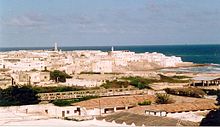
Qur'anic schools (also known as dugsi) remain the basic system of traditional religious instruction in Somalia. They provide Islamic education for children, thereby filling a clear religious and social role in the country. Known as the most stable local, non-formal system of education providing basic religious and moral instruction, their strength rests on community support and their use of locally made and widely available teaching materials. The Qur'anic system, which teaches the greatest number of students relative to other educational sub-sectors, is oftentimes the only system accessible to Somalis in nomadic as compared to urban areas. A study from 1993 found, among other things, that "unlike in primary schools where gender disparity is enormous, around 40 per cent of Qur'anic school pupils are girls; but the teaching staff have minimum or no qualification necessary to ensure intellectual development of children." To address these concerns, the Somali government on its own part subsequently established the Ministry of Endowment and Islamic Affairs, under which Qur'anic education is now regulated.
In the Somali diaspora, multiple Islamic fundraising events are held every year in cities like Birmingham, London, Toronto and Minneapolis, where Somali scholars and professionals give lectures and answer questions from the audience. The purpose of these events is usually to raise money for new schools or universities in Somalia, to help Somalis that have suffered as a consequence of floods and/or droughts, or to gather funds for the creation of new mosques like the Abuubakar-As-Saddique Mosque, which is currently undergoing construction in the Twin cities.
In addition, the Somali community has produced numerous important Muslim figures over the centuries, many of whom have significantly shaped the course of Islamic learning and practice in the Horn of Africa, the Arabian Peninsula and well beyond.
Important Islamic figures

- Abdirahman bin Isma'il al-Jabarti – 10th century Islamic leader in northern Somalia.
- Yusuf bin Ahmad al-Kawneyn – 13th century scholar, philosopher and saint. Associated with the development of Wadaad's writing.
- Abadir Umar ar-Rida – 13th century Sheikh and patron saint of Harar.
- Uthman bin Ali Zayla'i – 14th century Somali theologian and jurist who wrote the single most authoritative text on the Hanafi school of Islam, consisting of four volumes known as the Tabayin al-Haqa’iq li Sharh Kanz al-Daqa’iq.
- Sa'id of Mogadishu – 14th century Somali scholar and traveler. His reputation as a scholar earned him audiences with the Emirs of Mecca and Medina. He travelled across the Muslim world and visited Bengal and China.
- Ahmad ibn Ibrahim al-Ghazi (c. 1507 – 21 February 1543) – 16th century Imam and military leader that led the Conquest of Abyssinia.
- Nur ibn Mujahid – 16th century Somali Emir and patron saint of Harar.
- Ali al-Jabarti (d. 1492) – 16th century Somali scholar and politician in the Mamluk Empire.
- Hassan al-Jabarti (d. 1774) – Somali mathematician, theologian, astronomer and philosopher; considered one of the great scholars of the 18th century.
- Abd al-Rahman al-Jabarti (1753–1825) – Somali scholar living in Cairo that recorded the Napoleonic invasion of Egypt.
- Abd al Aziz al-Amawi (1832–1896) – 19th century influential Somali diplomat, historian, poet, jurist and scholar living in the Sultanate of Zanzibar.
- Shaykh Abd Al-Rahman bin Ahmad al-Zayla'i (1820–1882) – Somali scholar who played a crucial role in the spread of the Qadiriyyah movement in Somalia and East Africa.
- Shaykh Sufi (1829–1904) – 19th century Somali scholar, poet, reformist and astrologer.
- Sheikh Uways Al-Barawi (1847–1909) – Somali scholar credited with reviving Islam in 19th century East Africa and with followers in Yemen and Indonesia.
- Abdallah al-Qutbi (1879–1952) – Somali polemicist theologian and philosopher; best known for his five-part Al-Majmu'at al-mubaraka ("The Blessed Collection"), published in Cairo.
- Sheikh Muhammad al-Sumali (1910-2005) – Somali scholar and teacher in the Masjid Al-Haram in Mecca. He influenced many of the prominent Islamic scholars of today.
Clan, family and social stratification
Main article: Demographics of SomaliaClans
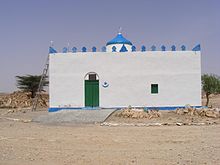
Somalis are ethnically of Hamitic ancestral stock, but have genealogical traditions asserting descent from various Arabian patriarchs. They are segmented into various clan groupings, which are important kinship units that play a central part in Somali culture and politics. Clan families are patrilineal, and are divided into clans, primary lineages or subclans, and dia-paying kinship groups. The lineage terms qabiil, qolo, jilib and reer are often interchangeably used to indicate the different segmentation levels. The clan represents the highest kinship level. It owns territorial properties and is typically led by a clan-head or Sultan. Primary lineages are immediately descended from the clans, and are exogamous political units with no formally installed leader. They comprise the segmentation level that an individual usually indicates he or she belongs to, with their founding patriarch reckoned to between six and ten generations.
The most common 5 major clan families are the traditionally nomadic pastoralist Darod, Dir, Hawiye and Isaaq, and the sedentary agropastoralist Rahanweyn Minor Somali clans include Benadiri.
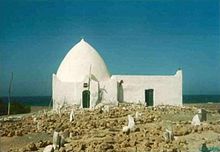
The Dir, Hawiye, Gardere( Gaalje'el, Degodia) , Hawadle and Garre trace agnatic origins to the patriarch Samaale to Arabian Banu Hashim origins through Aqiil Abu Talib ibn Abd al-Muttalib. The Darod have separate paternal traditions of descent through Abdirahman bin Isma'il al-Jabarti (Sheikh Darod), who is said to have arrived at a later date from the Arabian peninsula, in the 10th or 11th centuries. Sheikh Darod is, in turn, asserted to have married a woman from the Dir, thus establishing matrilateral ties with the Samaale main stem. Although often recognized as a sub-clan of the Dir, the Isaaq clan claims paternal descent from one Shaykh Ishaq ibn Ahmad al-Hashimi (Sheikh Isaaq). The Rahanweyn or Sab trace their stirp to the patriarch Sab. Both Samaale and Sab are supposed to have ultimately descended from a common lineage originating in the Arabian peninsula. These traditions of descent from elite Arab forefathers, who settled on the littoral, are debated, although they are based on early Arab documents and northern oral folklore.
The tombs of the founders of the Darod, Dir and Isaaq major clans, as well as the Abgaal subclan of the Hawiye are all located in northern Somalia. Tradition holds this general area as an ancestral homeland of the Somali people.
Kinship
The traditional political unit among the Somali people has been kinships. Dia-paying groups are groupings of a few small lineages, each of which consist of a few hundred to a few thousand members. They trace their foundation to between four to eight generations. Members are socially contracted to support each other in jural and political duties, including paying or receiving dia or blood compensation (mag in Somali). Compensation is obligatory in regards to actions committed by or against a dia-paying group, including blood-compensation in the event of damage, injury or death.
Social stratification
Main article: Somali aristocratic and court titles
Within traditional Somali society, like the other ethnic groups in the Horn of Africa region, there has been social stratification. According to the historian Donald Levine, these comprised high-ranking clans, low-ranking clans, caste groups, and slaves. This rigid hierarchy and concepts of lineal purity contrast with the relative egalitarianism in clan leadership and political control.
Nobles constituted the upper tier and were known as bilis. They consist of individuals of ethnic Somali ancestral origin, and have been endogamous. The nobles are distinguished by Europid physical features, different from those of negro Africans. They believe with great pride that they are of Arabian ancestry, and trace their stirp to Muhammad's lineage of Quraysh and those of his companions. Although they do not consider themselves culturally Arabs, except for the shared religion, their presumed noble Arabian origins genealogically unite them.
The lower tier was designated as Sab, and was distinguished by its heterogeneous constitution and agropastoral lifestyle as well as some linguistic and cultural differences. A third Somali caste strata was made up of artisanal groups, which were endogamous and hereditary. Among the caste groups, the Midgan were traditionally hunters and circumcision performers. The Tumal (also spelled Tomal) were smiths and leatherworkers, and the Yibir (also spelled Yebir) were the tanners and magicians.
According to the anthropologist Virginia Luling, the artisanal caste groups of the north closely resembled their higher caste kinsmen, being generally Caucasoid like other ethnic Somalis. Although ethnically indistinguishable from each other, state Mohamed Eno and Abdi Kusow, upper castes have stigmatized the lower ones.
Outside of the Somali caste system were slaves of Bantu origin and Negroid physiognomy (known as jareer or adoon). Most were brought in during the early modern period from the Zanzibar market to work on plantations in the riverine area in southern Somalia. Although the northern Somali communities socially distinguished between the low-caste groups and the slaves, greater interaction in the south between commoners occasionally blurred these lines. According to Virginia Luling and Catherine Besteman, these Bantu slaves were part of a broader social category known as Habash (a pejorative), which included other Negroid groups and agriculturalists such as the Shiidle of the Middle Shebelle valley and the Eyle of Bur Heybe. Besteman states that these non-Somali agriculturalists' physical features and occupations differentiated them from Somalis and unfavorably positioned them within the social hierarchy.
Marriage
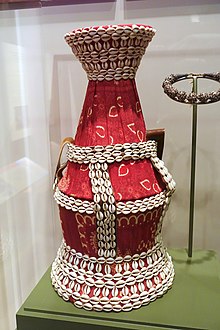
Among Somali clans, in order to strengthen alliance ties, marriage is often to another ethnic Somali from a different clan. According to I. M. Lewis, of 89 marriages initiated by men of the Dhulbahante clan, 55 (62%) were therefore with women of Dhulbahante subclans other than those of their husbands; 30 (33.7%) were with women of adjacent clans of other clan families (Isaaq, 28; Hawiye, 3); and 3 (4.3%) were with women of other clans of the Darod clan family (Majerteen 2, Ogaden 1). Such exogamy is always followed by the dia-paying group and usually adhered to by the primary lineage, whereas marriage to lineal kin falls within the prohibited range. These traditional strictures against consanguinous marriage rule out the patrilateral cousin marriages that are favored by Arab Bedouins, and which are practiced to a limited degree by certain northern Somali subclans. The endogamous tradition within the Somali clans intensified after their contact with the Arab society with increasing preference for cousin marriages. In southern Somalia, endogamous marriages also served as a means of ensuring clan solidarity in uncertain socio-political circumstances.
In 1975, the most prominent government reforms regarding family law in a Muslim country were set in motion in the Somali Democratic Republic, which put women and men, including husbands and wives, on complete equal footing. The 1975 Somali Family Law gave men and women equal division of property between the husband and wife upon divorce and the exclusive right to control by each spouse over his or her personal property.
Language
Main article: Somali language
The Somali language (Af-Somali) is a member of the Cushitic branch of the Afro-Asiatic (Hamitic-Semitic) family. Its nearest relatives are the Afar and Saho languages. Somali is the best documented of the Cushitic languages, with academic studies of it dating from before 1900.
The exact number of speakers of Somali is unknown. One source estimates that there are 7.78 million speakers of Somali in Somalia itself and 12.65 million speakers globally. The Somali language is spoken by ethnic Somalis in Greater Somalia and the Somali diaspora.

Somali dialects are divided into three main groups: Northern, Benaadir and Maay. Northern Somali (or Northern-Central Somali) forms the basis for Standard Somali. Benaadir (also known as Coastal Somali) is spoken on the Benadir coast from Adale to south of Merca, including Mogadishu, as well as in the immediate hinterland. The coastal dialects have additional phonemes which do not exist in Standard Somali. Maay is principally spoken by the Digil and Mirifle (Rahanweyn) clans in the southern areas of Somalia. A number of writing systems have been used over the years for transcribing the language. Of these, the Somali Latin alphabet is the most widely used, and has been the official writing script in Somalia since the government of former President of Somalia Mohamed Siad Barre formally introduced it in October 1972. The script was developed by the Somali linguist Shire Jama Ahmed specifically for the Somali language. It uses all letters of the English Latin alphabet, except p, v and z. Besides Ahmed's Latin script, other orthographies that have been used for centuries for writing Somali include the long-established Arabic script and the Wadaad writing. Other writing systems developed in the twentieth century include the Osmanya, Borama and Kaddare scripts, which were invented by Osman Yusuf Kenadid, Abdurahman Sheikh Nuur and Hussein Sheikh Ahmed Kaddare, respectively.
In addition to Somali, Arabic, which is also an Afro-Asiatic tongue, is an official national language in both Somalia and Djibouti. Many Somalis speak it due to centuries-old ties with the Arab world, the far-reaching influence of the Arabic media, and religious education. Somalia and Djibouti are also both members of the Arab League.
Culture
 |
| Part of a series on the |
| Culture of Somalia |
|---|
| Culture |
| People |
| Religion |
| Language |
| Politics |
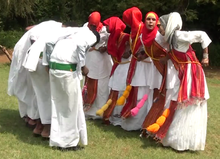
The culture of Somalia is an amalgamation of traditions developed independently and through interaction with neighbouring and far away civilizations, such as other parts of Northeast Africa, the Arabian Peninsula, India and Southeast Asia.
The textile-making communities in Somalia are a continuation of an ancient textile industry, as is the culture of wood carving, pottery and monumental architecture that dominates Somali interiors and landscapes. The cultural diffusion of Somali commercial enterprise can be detected in its cuisine, which contains Southeast Asian influences. Due to the Somali people's passionate love for and facility with poetry, Somalia has often been referred to by scholars as a "Nation of Poets" and a "Nation of Bards" including, among others, the Canadian novelist Margaret Laurence.
All of these traditions, including festivals, martial arts, dress, literature, sport and games such as Shax, have immensely contributed to the enrichment of Somali heritage.
Music
Main article: Music of SomaliaSomalis have a rich musical heritage centered on traditional Somali folklore. Most Somali songs are pentatonic. That is, they only use five pitches per octave in contrast to a heptatonic (seven note) scale, such as the major scale. At first listen, Somali music might be mistaken for the sounds of nearby regions such as Ethiopia, Sudan or Arabia, but it is ultimately recognizable by its own unique tunes and styles. Somali songs are usually the product of collaboration between lyricists (midho), songwriters (lahan) and singers ('odka or "voice").
Musicians and bands
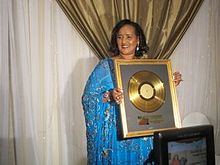
- Aar Maanta – UK-based Somali singer, composer, writer and music producer.
- Abdi Sinimo – prominent Somali artist and inventor of the Balwo musical style.
- Abdullahi Qarshe – Somali musician, poet and playwright known for his innovative styles of music, which included a wide variety of musical instruments such as the guitar, piano and oud.
- Ali Feiruz – Somali musician from Djibouti; part of the Radio Hargeisa generation of Somali artists.
- Dur-Dur – Somali band active during the 1980s and 1990s in Somalia, Djibouti and Ethiopia.
- Hasan Adan Samatar – popular male artist during the 1970s and 80s.
- Jonis Bashir – Somali-Italian actor and singer
- Khadija Qalanjo – popular Somali singer in the 1970s and 1980s.
- K'naan – award-winning Somali-Canadian hip hop artist.
- Magool (May 2, 1948 – March 19, 2004) – prominent Somali singer considered in Somalia as one of the greatest entertainers of all time.
- Maryam Mursal (born 1950) – famous musician from Somalia; composer and vocalist whose work has been produced by the record label Real World.
- Mohammed Mooge – Somali artist from the Radio Hargeisa generation.
- Poly Styrene – Somali-British punk rock singer; best known as being the lead singer of X Ray Spex.
- Saado Ali Warsame – Somali singer-songwriter and modern qaraami exponent.
- Waaberi – Somalia's foremost musical group that toured through several countries in Northeast Africa and Asia, including Egypt, Sudan and China.
- Waayaha Cusub – Somali music collective. Organized the international Reconciliation Music Festival in 2013 in Mogadishu.
Cinema and theatre
Main article: Cinema of Somalia
Growing out of the Somali people's rich storytelling tradition, the first few feature-length Somali films and cinematic festivals emerged in the early 1960s, immediately after independence. Following the creation of the Somali Film Agency (SFA) regulatory body in 1975, the local film scene began to expand rapidly. The Somali filmmaker Ali Said Hassan concurrently served as the SFA's representative in Rome. In the 1970s and early 1980s, popular musicals known as riwaayado were the main driving force behind the Somali movie industry. Epic and period films as well as international co-productions followed suit, facilitated by the proliferation of video technology and national television networks. Said Salah Ahmed during this period directed his first feature film, The Somali Darwish (The Somalia Dervishes), devoted to the Dervish State. In the 1990s and 2000s, a new wave of more entertainment-oriented movies emerged. Referred to as Somaliwood, this upstart, youth-based cinematic movement has energized the Somali film industry and in the process introduced innovative storylines, marketing strategies and production techniques. The young directors Abdisalam Aato of Olol Films and Abdi Malik Isak are at the forefront of this quiet revolution.
Art
Main article: Somali art
Somalis have old visual art traditions, which include pottery, jewelry and wood carving. In the medieval period, affluent urbanites commissioned local wood and marble carvers to work on their interiors and houses. Intricate patterns also adorn the mihrabs and pillars of ancient Somali mosques. Artistic carving was considered the province of men, whereas the textile industry was mainly that of women. Among the nomads, carving, especially woodwork, was widespread and could be found on the most basic objects such as spoons, combs and bowls. It also included more complex structures, such as the portable nomadic house, the aqal. In the last several decades, traditional carving of windows, doors and furniture have given way to workshops employing electrical machinery, which deliver the same results in a far shorter time period.
Additionally, henna is an important part of Somali culture. It is worn by Somali women on their hands, arms, feet and neck during wedding ceremonies, Eid, Ramadan and other festive occasions. Somali henna designs are similar to those in the Arabian peninsula, often featuring flower motifs and triangular shapes. The palm is also frequently decorated with a dot of henna and the fingertips are dipped in the dye. Henna parties are usually held before the wedding takes place. Somali women have likewise traditionally applied kohl (kuul) to their eyes. Usage of the eye cosmetic in the Horn region is believed to date to the ancient Land of Punt.
Sports
Main article: Sports in Somalia
Football is the most popular sport amongst Somalis. Important competitions are the Somalia League and Somalia Cup. The Ocean Stars is Somalia's multi-ethnic national team.

Basketball is also played in the country. The FIBA Africa Championship 1981 was hosted in Mogadishu from 15 to 23 December December 1981, during which the national basketball team received the bronze medal. The squad also takes part in the basketball event at the Pan Arab Games. Other team sports include badminton, baseball, table tennis, and volleyball.
In the martial arts, Faisal Jeylani Aweys and Mohamed Deq Abdulle also took home a silver medal and fourth place, respectively, at the 2013 Open World Taekwondo Challenge Cup in Tongeren. The Somali National Olympic committee has devised a special support program to ensure continued success in future tournaments. Additionally, Mohamed Jama has won both world and European titles in K1 and Thai Boxing. Other individuals sports include judo, boxing, athletics, weight lifting, swimming, rowing, fencing and wrestling.
Attire
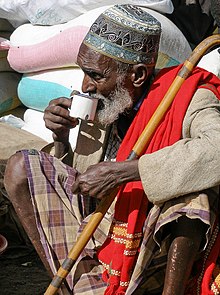
When not dressed in Westernized clothing such as jeans and t-shirts, Somali men typically wear the macawis. It is a sarong that is worn around the waist. On their heads, they often wrap a colorful turban or wear the koofiyad, which is an embroidered fez.
Due to Somalia's proximity to and close ties with the Arabian Peninsula, many Somali men also wear the jellabiya (jellabiyad or qamiis). The costume is a long white garment common in the Arab world.
During regular, day-to-day activities, Somali women usually wear the guntiino. It is a long stretch of cloth tied over the shoulder and draped around the waist. The cloth is usually made out of alandi, which is a textile that is common in the Horn region and some parts of North Africa. The garment can be worn in different styles. It can also be made with other fabrics, including white cloth with gold borders. For more formal settings, such as at weddings or religious celebrations like Eid, women wear the dirac. It is a long, light, diaphanous voile dress made of silk, chiffon, taffeta or saree fabric. The gown is worn over a full-length half-slip and a brassiere. Known as the gorgorad, the underskirt is made out of silk and serves as a key part of the overall outfit. The dirac is usually sparkly and very colorful, the most popular styles being those with gilded borders or threads.
Married women tend to sport headscarves referred to as shaash. They also often cover their upper body with a shawl, which is known as garbasaar. Unmarried or young women, however, do not always cover their heads. Traditional Arabian garb, such as the jilbab and abaya, is also commonly worn.
Additionally, Somali women have a long tradition of wearing gold jewelry, particularly bangles. During weddings, the bride is frequently adorned in gold. Many Somali women by tradition also wear gold necklaces and anklets.
Ethnic flag

The Somali flag is an ethnic flag conceived to represent ethnic Somalis. It was created in 1954 by the Somali scholar Mohammed Awale Liban, after he had been selected by the labour trade union of the Trust Territory of Somalia to come up with a design. Upon independence in 1960, the flag was adopted as the national flag of the nascent Somali Republic. The five-pointed Star of Unity in the flag's center represents the Somali ethnic group inhabiting the five territories in Greater Somalia.
Cuisine
Main article: Somali cuisine
Somali cuisine varies from region to region and consists of a fusion of diverse culinary influences. It is the product of Somalia's rich tradition of trade and commerce. Despite the variety, there remains one thing that unites the various regional cuisines: all food is served halal. There are therefore no pork dishes, alcohol is not served, nothing that died on its own is eaten, and no blood is incorporated.
Breakfast (quraac) is an important meal for Somalis, who often start the day with some style of tea (shahie) or coffee (qaxwa). The tea is often in the form of haleeb shai (Yemeni milk tea) in the north. The main dish is typically a pancake-like bread (canjeero or canjeelo) similar to Ethiopian injera, but smaller and thinner. It might also be eaten with a stew (maraqe) or soup. Qado or lunch is often elaborate. Varieties of bariis (rice), the most popular probably being basmati, usually serve as the main dish alongside goat or lamb. Spices like cumin, cardamom, cloves, cinnamon, and garden sage are used to aromatize these different rice delicacies. Somalis eat dinner as late as 9 pm. During Ramadan, supper is often served after Tarawih prayers; sometimes as late as 11 pm.
Xalwo (halva) is a popular confection eaten during festive occasions, such as Eid celebrations or wedding receptions. It is made from sugar, corn starch, cardamom powder, nutmeg powder and ghee. Peanuts are also sometimes added to enhance texture and flavor. After meals, homes are traditionally perfumed using frankincense (lubaan) or incense (cuunsi), which is prepared inside an incense burner referred to as a dabqaad.
Literature
Main article: Somali literature
Somali scholars have for centuries produced many notable examples of Islamic literature ranging from poetry to Hadith. With the adoption of the Latin alphabet in 1972 to transcribe the Somali language, numerous contemporary Somali authors have also released novels, some of which have gone on to receive worldwide acclaim. Most of the early Somali literature is in the Arabic script and Wadaad writing. This usage was limited to Somali clerics and their associates, as sheikhs preferred to write in the liturgical Arabic language. Various such historical manuscripts in Somali nonetheless exist, which mainly consist of Islamic poems (qasidas), recitations and chants. Among these texts are the Somali poems by Sheikh Uways and Sheikh Ismaaciil Faarah. The rest of the existing historical literature in Somali principally consists of translations of documents from Arabic.
Authors and poets
- Mohamed Ibrahim Warsame 'Hadrawi' – songwriter, philosopher, and Somali Poet Laureate; also dubbed the Somali Shakespeare.
- Nuruddin Farah (born 1943) – Somali writer and winner of the 1998 Neustadt International Prize for Literature.
- Abdillahi Suldaan Mohammed Timacade (1920–1973) – prominent Somali poet known for his nationalist poems such as Kana siib Kana Saar.
- Mohamud Siad Togane (born 1943) – Somali-Canadian poet, professor, and political activist.
- Maxamed Daahir Afrax – Somali novelist and playwright. Afrax has published several novels and short stories in Somali and Arabic, and has also written two plays, the first being Durbaan Been ah ("A Deceptive Drum"), which was staged in Somalia in 1979. His major contribution in the field of theatre criticism is Somali Drama: Historical and Critical Study (1987).
- Nadifa Mohamed – Somali novelist. Winner of the 2010 Betty Trask Prize.
- Farah Mohamed Jama Awl – famous Somali author best known for his historical fiction novels.
- Diriye Osman – Somali writer and visual artist. Winner of the 2014 Polari First Book Prize.
- Sofia Samatar – Somali professor and writer. Winner of the 2014 World Fantasy Award.
Law
Main article: Xeer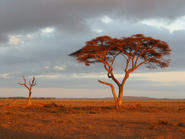
Somalis for centuries have practiced a form of customary law, which they call Xeer. Xeer is a polycentric legal system where there is no monopolistic agent that determines what the law should be or how it should be interpreted. It is assumed to have developed exclusively in the Horn of Africa since approximately the 7th century. Given the dearth of loan words from foreign languages within the xeer's nomenclature, the customary law appears to have evolved in situ.
Xeer is defined by a few fundamental tenets that are immutable and which closely approximate the principle of jus cogens in international law: payment of blood money (locally referred to as diya or mag), assuring good inter-clan relations by treating women justly, negotiating with "peace emissaries" in good faith, and sparing the lives of socially protected groups (e.g. children, women, the pious, poets and guests), family obligations such as the payment of dowry, and sanctions for eloping, rules pertaining to the management of resources such as the use of pasture land, water, and other natural resources, providing financial support to married female relatives and newlyweds, donating livestock and other assets to the poor. The Xeer legal system also requires a certain amount of specialization of different functions within the legal framework. Thus, one can find odayal (judges), xeer boggeyaal (jurists), guurtiyaal (detectives), garxajiyaal (attorneys), murkhaatiyal (witnesses) and waranle (police officers) to enforce the law.
Architecture
| Somali architecture |
|---|
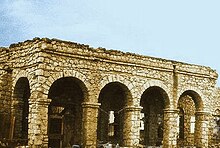 |
| Aqueducts |
| Castles |
| Citadels |
| Lighthouses |
| Mosques |
| Tombs |
| Fortifications |
Somali architecture is a rich and diverse tradition of engineering and designing. It involves multiple different construction types, such as stone cities, castles, citadels, fortresses, mosques, mausoleums, towers, tombs, tumuli, cairns, megaliths, menhirs, stelae, dolmens, stone circles, monuments, temples, enclosures, cisterns, aqueducts, and lighthouses. Spanning the ancient, medieval and early modern periods in Greater Somalia, it also includes the fusion of Somali architecture with Western designs in contemporary times.
In ancient Somalia, pyramidical structures known in Somali as taalo were a popular burial style. Hundreds of these dry stone monuments are found around the country today. Houses were built of dressed stone similar to the ones in Ancient Egypt. There are also examples of courtyards and large stone walls enclosing settlements, such as the Wargaade Wall.
The peaceful introduction of Islam in the early medieval era of Somalia's history brought Islamic architectural influences from Arabia and Persia. This had the effect of stimulating a shift in construction from drystone and other related materials to coral stone, sundried bricks, and the widespread use of limestone in Somali architecture. Many of the new architectural designs, such as mosques, were built on the ruins of older structures. This practice would continue over and over again throughout the following centuries.
Geographic distribution
Main article: Somali diaspora
Somalis constitute the largest ethnic group in Somalia, at approximately 85% of the nation's inhabitants. They also comprise around 60% of the inhabitants in Djibouti.
Civil strife in the early 1990s greatly increased the size of the Somali diaspora, as many of the best educated Somalis left for the Middle East, Europe and North America. In Canada, the cities of Toronto, Ottawa, Calgary, Edmonton, Montreal, Vancouver, Winnipeg and Hamilton all harbor Somali populations. Statistics Canada's 2006 census ranks people of Somali descent as the 69th largest ethnic group in Canada.
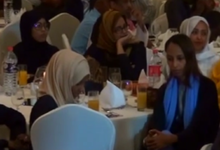
While the distribution of Somalis per country in Europe is hard to measure because the Somali community on the continent has grown so quickly in recent years, the Office for National Statistics estimates that 114,000 people born in Somalia were living in the United Kingdom in 2015. Somalis in Britain are largely concentrated in the cities of London, Sheffield, Bristol, Birmingham, Cardiff, Liverpool, Manchester, Leeds, and Leicester, with London alone accounting for roughly 78% of Britain's Somali population in 2001. There are also significant Somali communities in Sweden: 57,906 (2014); the Netherlands: 37,432 (2014); Norway: 38,413 (2015); Denmark: 18,645 (2014); and Finland: 16,721 (2014).
In the United States, Minneapolis, Saint Paul, Columbus, San Diego, Seattle, Washington, D.C., Houston, Atlanta, Los Angeles, Portland, Denver, Nashville, Green Bay, Lewiston, Portland, Maine and Cedar Rapids have the largest Somali populations.

An estimated 20,000 Somalis emigrated to the U.S. state of Minnesota some ten years ago and the Twin Cities (Minneapolis and Saint Paul) now have the highest population of Somalis in North America. The city of Minneapolis hosts hundreds of Somali-owned and operated businesses offering a variety of products, including leather shoes, jewelry and other fashion items, halal meat, and hawala or money transfer services. Community-based video rental stores likewise carry the latest Somali films and music. The number of Somalis has especially surged in the Cedar-Riverside area of Minneapolis.

There is a sizable Somali community in the United Arab Emirates. Somali-owned businesses line the streets of Deira, the Dubai city centre, with only Iranians exporting more products from the city at large. Internet cafés, hotels, coffee shops, restaurants and import-export businesses are all testimony to the Somalis' entrepreneurial spirit. Star African Air is also one of three Somali-owned airlines which are based in Dubai.
Besides their traditional areas of inhabitation in Greater Somalia, a Somali community mainly consisting of entrepreneurs, academics, and students also exists in Egypt. In addition, there is an historical Somali community in the general Sudan area. Primarily concentrated in the north and Khartoum, the expatriate community mainly consists of students as well as some businesspeople. More recently, Somali entrepreneurs have established themselves in Kenya, investing over $1.5 billion in the Somali enclave of Eastleigh alone. In South Africa, Somali businesspeople also provide most of the retail trade in informal settlements around the Western Cape province.
Notable individuals of the diaspora
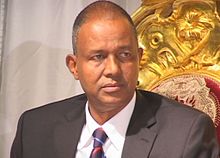
- Abdi Yusuf Hassan – Somali politician, diplomat and journalist. Former Director of IRIN and UNHCR Head of External and Media Relations in Southwest and Central Asia.
- Abdirahim Hussein Mohamed – Somali politician. Elected Chairman of the Helsinki Centre Youth in 2007 and Chairman of the Moniheli cooperation network for multicultural organizations.
- Abdirashid Duale – award-winning Somali entrepreneur, philanthropist, and the CEO of the multinational enterprise Dahabshiil.
- Abdulqawi Yusuf – Prominent Somali international lawyer and judge with the International Court of Justice.
- Adan Mohammed – Somali banker, entrepreneur and politician. He previously served as the Managing Director of Barclays Bank in East and West Africa and is currently the Cabinet Secretary for Industrialization of Kenya.
- Ahmed Hussen – Somali lawyer. President of the Canadian Somali Congress.
- Ali Said Faqi – Somali scientist and the leading researcher on the design and interpretation of toxicology studies at the MPI research center in Mattawan, Michigan.
- Amina Moghe Hersi – Award-winning Somali entrepreneur that has launched several multimillion-dollar projects in Kampala, Uganda, such as the Oasis Centre luxury mall and the Laburnam Courts. She also runs Kingstone Enterprises Limited, one of the largest distributors of cement and other hardware materials in Kampala.
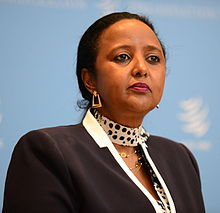
- Amina Mohamed – Somali lawyer and politician. Former Chairman of the International Organization for Migration and the World Trade Organisation's General Council, and current Secretary for Foreign Affairs of Kenya.
- Ayaan and Idyl Mohallim – Somali twin fashion designers and owners of the Mataano brand.
- Ayaan Hirsi Ali – Feminist and atheist activist, writer and politician known for her views critical of Islam and female circumcision.
- Ayub Daud – Somali international footballer who plays as a forward/attacking midfielder for FC Crotone on loan from Juventus.
- Faisal Hawar – Somali engineer and entrepreneur. Chairman of the International Somalia Development Foundation and the Maakhir Resource Company.
- Halima Ahmed – Somali political activist with the Youth Rehabilitation Center and prospective candidate in the Federal Parliament of Somalia.
- Hanan Ibrahim – Somali social activist. Received the Queen's Award for Voluntary Service in 2004 and was made an MBE in 2010.
- Hassan Abdillahi – Somali journalist. President of Ogaal Radio, the largest Somali community station in Canada.
- Hawa Ahmed – Somali-Swedish fashion model and winner of Cycle 4 of Sweden's Next Top Model.
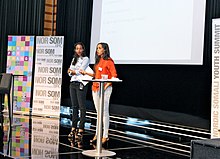
- Hibaaq Osman – Somali political strategist. Founder and Chairperson of the ThinkTank for Arab Women, the Dignity Fund, and Karama.
- Hodan Ahmed – Somali political activist and Senior Program Officer at the National Democratic Institute.
- Hodan Nalayeh – Somali media executive and entrepreneur. President of the Cultural Integration Agency and the Vice President of Sales & Programming Development of Cameraworks Productions International.
- Idil Ibrahim – Somali-American film director, writer and producer. Founder of Zeila Films.
- Iman Mohamed Abdulmajid – international fashion icon, supermodel, actress and entrepreneur; professionally known as Iman.
- Jawahir Ahmed – Somali-American model. Served as Miss Somalia in 2013 Miss United Nations USA pageant.
- Leila Abukar – Somali-Australian political activist. Recipient of Centenary Medal.
- Mohamed Abdullahi Mohamed (Farmajo) – Somali politician and diplomat. Former Prime Minister of Somalia and founder of the Tayo Political Party.
- Musse Olol – Somali-American social activist. Recipient of the 2011 Director's Community Leadership Award.
- Mustafa Mohamed – Somali-Swedish long-distance runner who mainly competes in the 3,000-meter steeplechase. Won gold in the 2006 Nordic Cross Country Championships and at the 1st SPAR European Team Championships in Leiria, Portugal, in 2009. Beat the 31-year-old Swedish record in 2007.

- Nathif Jama Adam – Somali banker and politician. Former Senior Vice President and the Head of the Sharjah Islamic Bank's Investments & International Banking Division, and Governor of Garissa County.
- Omar Abdi Ali – Somali entrepreneur, accountant, financial consultant, philanthropist, and specialist on Islamic finance. Was formerly CEO of Dar al-Maal al-Islami (DMI Trust), which under his management increased its assets from $1.6 billion to $4.0 billion. He is currently the chairman and founder of the multinational real estate corporation Integrated Property Investments Limited and its sister company Quadron investments.
- Rageh Omaar – Somali-British television news presenter and writer. Formerly a BBC news correspondent in 2009, he moved to a new post at Al Jazeera English, where he currently presents the nightly weekday documentary series Witness.
- Sulekha Ali, a Somali-Canadian musician.
- Waris Dirie – Somali model, author, actress, and social activist. UN Special Ambassador from 1997 to 2003.
- Yasmin Warsame – Somali-Canadian model who was named "The Most Alluring Canadian" in a poll by Fashion magazine.
- Zahra Abdulla – Somali politician in Finland and member of the Helsinki City Council representing the Green League.
Genetics
Y-DNA
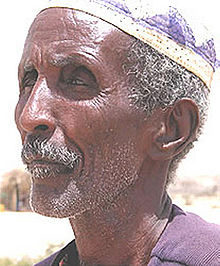
According to Y chromosome studies by Sanchez et al. (2005), Cruciani et al. (2004, 2007), the Somalis are paternally closely related to other Afro-Asiatic-speaking groups in Northeast Africa. Besides comprising the majority of the Y-DNA in Somalis, the E1b1b1a (formerly E3b1a) haplogroup also makes up a significant proportion of the paternal DNA of Ethiopians, Sudanese, Egyptians, Berbers, North African Arabs, as well as many Mediterranean populations. Sanchez et al. (2005) observed the M78 subclade of E1b1b in about 77% of their Somali male samples. According to Cruciani et al. (2007), the presence of this subhaplogroup in the Horn region may represent the traces of an ancient migration from Egypt/Libya. By contrast, no significant Bantu lineages were found among ethnic Somalis. This indicates that the ancient Bantu migration from West-Central Africa likely did not reach the Horn due to the Afro-Asiatic language barrier, so the Bantu presence in the region is instead most probably of recent date.
After haplogroup E1b1b, the second most frequently occurring Y-DNA haplogroup among Somalis is the West Asian haplogroup T (M184). The clade is observed in more than 10% of Somali males generally, with a frequency peak of 82.4% among Somalis in Dire Dawa. Haplogroup T, like haplogroup E1b1b, is also typically found among other populations of Northeast Africa, the Maghreb, the Near East and the Mediterranean.
mtDNA

According to mtDNA studies by Holden (2005) and Richards et al. (2006), a significant proportion of the maternal lineages of Somalis consists of the M1 haplogroup. This mitochondrial clade is common among Ethiopians and North Africans, particularly Egyptians and Algerians. M1 is believed to have originated in Asia, where its parent M clade represents the majority of mtDNA lineages. This haplogroup is also thought to possibly correlate with the Afro-Asiatic language family:
"We analysed mtDNA variation in ~250 persons from Libya, Somalia, and Congo/Zambia, as representatives of the three regions of interest. Our initial results indicate a sharp cline in M1 frequencies that generally does not extend into sub-Saharan Africa. While our North and especially East African samples contained frequencies of M1 over 20%, our sub-Saharan samples consisted almost entirely of the L1 or L2 haplogroups only. In addition, there existed a significant amount of homogeneity within the M1 haplogroup. This sharp cline indicates a history of little admixture between these regions. This could imply a more recent ancestry for M1 in Africa, as older lineages are more diverse and widespread by nature, and may be an indication of a back-migration into Africa from the Middle East."
Autosomal DNA

According to an autosomal DNA study by Hodgson et al. (2014), the Afro-Asiatic languages were likely spread across Africa and the Near East by an ancestral population(s) carrying a newly identified non-African genetic component, which the researchers dub the "Ethio-Somali". This Ethio-Somali component is today most common among Afro-Asiatic-speaking populations in the Horn of Africa. It reaches a frequency peak among ethnic Somalis, representing the majority of their ancestry. The Ethio-Somali component is most closely related to the Maghrebi non-African genetic component, and is believed to have diverged from all other non-African ancestries at least 23,000 years ago. On this basis, the researchers suggest that the original Ethio-Somali carrying population(s) probably arrived in the pre-agricultural period from the Near East, having crossed over into northeastern Africa via the Sinai Peninsula. The population then likely split into two branches, with one group heading westward toward the Maghreb and the other moving south into the Horn. Ancient DNA analysis indicates that this foundational ancestry in the Horn region is akin to that of the Neolithic farmers of the southern Levant.
HLA antigens
The analysis of HLA antigens has also helped clarify the possible background of the Somali people, as the distribution of haplotype frequencies vary among population groups. According to Mohamoud et al. (2006):
"HLA antigens of the Somali population are not categorised as well as those of other international ethnic groups. We analysed the HLA antigens of 76 unrelated Somalis who lived in the west of England. HLA -A, -B, -C and DRB1 typing was performed by polymerase chain reaction using sequence-specific oligonucleotide probes (PCR-SSOP) at a low-intermediate resolution level. Phenotype frequency, gene frequency and haplotype frequency were used to study the relationship between Somalis and other relevant populations. The antigens with highest frequencies were HLA -A1, A2, and A30; B7, B51 and B39; Cw7, Cw16, Cw17, Cw15 and Cw18; DR 13, DR17, DR8 and DR1. HLA haplotypes with high significance and characteristics of the Somali population are B7-Cw7, B39-Cw12, B51-Cw16, B57-Cw18. The result of HLA class I and class II antigen frequencies show that the Somali population appear more similar to Arab or Caucasoid than to African populations. The results are consistent with hypothesis, supported by cultural and historical evidence, of common origin of the Somali population."
Somali studies
Main article: Somali Studies
The scholarly term for research concerning Somalis and Greater Somalia is known as Somali Studies. It consists of several disciplines such as anthropology, sociology, linguistics, historiography and archaeology. The field draws from old Somali chronicles, records and oral literature, in addition to written accounts and traditions about Somalis from explorers and geographers in the Horn of Africa and the Middle East. Since 1980, prominent Somalist scholars from around the world have also gathered annually to hold the International Congress of Somali Studies.
Somalist scholars
- Osman Yusuf Kenadid – Pioneering scholar and writer on Somali history and science. Inventor of the Osmanya script and author of several textbooks on Somali language, astronomy, geography and philosophy.
- Musa Haji Ismail Galal – Somali writer, scholar and linguist. One of the foremost historical authorities on the Somali astronomical, astrological, meteorological and calendrical systems.
- Said Sheikh Samatar – Somali scholar and writer. Main areas of interest are linguistics and sociology.
- Mohamed Haji Mukhtar – Somali Professor of African & Middle Eastern History at Savannah State University. Has written extensively on the history of Somalia and the Somali language.
- Mohamed Diriye Abdullahi – Somali scholar, linguist and writer. Published on Somali culture, history, language and ethnogenesis.
- Ali Jimale Ahmed – Somali poet, essayist, scholar, and short story writer. Published on Somali history and linguistics
- Abdi Mohamed Kusow – Somali Associate Professor of Sociology at Iowa State in Ames, Iowa. Has written extensively on Somali sociology and anthropology. He is listed in Marquis Who's Who in America.
- Ahmed Ismail Samatar – Somali professor and dean of the Institute for Global Citizenship at Macalester College. He is the editor of Bildhaan: An International Journal of Somali Studies.
See also
References
- ^ CIA World Factbook: Somalia, people and Map of the Somalia Ethnic groups (CIA according de Perry-Castañeda Library Map Collection). The first gives 15% non-Somalis and the second 6%. Used 85% of current population of Somalia.
- ^ "Census 2007", first draft, Table 5. Central Statistical Agency of Ethiopia
- ^ "2009 POPULATION & HOUSING CENSUS RESULTS" (PDF). Ministry of State for Planning, National Development and Vision 2030. Archived from the original (PDF) on 10 August 2013. Retrieved 17 September 2014.
{{cite web}}: Unknown parameter|deadurl=ignored (|url-status=suggested) (help) - ^ – Ethnologue.com
- Shire, Saad A. Transactions with Homeland: Remittance. Bildhaan.: *N.B. Somali migrant population, Middle East including Yemen.
- "Ontario Municipal Election: Somali Canadian Prospective". Hiiraan Online. 10 November 2006. Retrieved 8 July 2013.; *N.B. 44,995 individuals reported Somali ethnicity in 2011 National Household Survey - c.f.
- ^ "Table 1.3: Overseas-born population in the United Kingdom, excluding some residents in communal establishments, by sex, by country of birth, January 2014 to December 2014". Office for National Statistics. 27 August 2015. Retrieved 4 May 2016. Figure given is the central estimate. See the source for 95% confidence intervals.
- "Survey: Nearly 1 in 3 US Somalis live in Minnesota". MPRNews. Retrieved 8 March 2015.
- ^ "Statistics Sweden - Foreign-born and born in Sweden".
- "Dubai's Somali diaspora hope for change". CCTV. 11 September 2012. Retrieved 8 March 2015.
- Jinnah, Zaheera. "Making Home in a Hostile Land: Understanding Somali Identity, Integration, Livelihood and Risks in Johannesburg" (PDF). J Sociology Soc Anth, 1 (1-2): 91-99 (2010). KRE Publishers. Retrieved 6 March 2014.
- ^ "Immigrants and Norwegian-born to immigrant parents, 1 January 2016".
- ^ "CBS StatLine - Population; sex, age, origin and generation, 1 January". cbs.nl.
- ^ "StatBank Denmark". statbank.dk.
- "Dubai´s Somali diaspora hope for change CCTV News - CNTV English". cntv.cn.
- ^ IOM - Finland
- "Anzahl der Ausländer in Deutschland nach Herkunftsland (Stand: 31. Dezember 2014)". Statista.
- "The People of Australia – Statistics from the 2011 Census" (PDF). Australian Government. Archived from the original (PDF) on 14 July 2014.
{{cite web}}: Unknown parameter|deadurl=ignored (|url-status=suggested) (help) - "Statistiche demografiche ISTAT". istat.it.
- "Statistique Suisse".
- Hertogen, J. "Inwoners van vreemde afkomst in België".
- Charmarkeh, H. "Social Media Usage, Tahriib (Migration), and Settlement among Somali Refugees in France".
- Fakhr, Alhan (15 July 2012). "Insecure once again". Daily Jang. Retrieved 10 November 2013.
- "Ethnic group profiles". stats.govt.nz.
- "Census 2011 - Non-Irish Nationals Living in Ireland" (PDF). Central Statistics Office.
- Joireman, Sandra F. (1997). Institutional Change in the Horn of Africa: The Allocation of Property Rights and Implications for Development. Universal-Publishers. p. 1. ISBN 1581120001.
- ^ "Somalia". World Factbook. Central Intelligence Agency. 14 May 2009. Retrieved 31 May 2009.
- ^ Mohamed Diriye Abdullahi, Culture and Customs of Somalia, (Greenwood Press: 2001), p.1
- I. M. Lewis, A pastoral democracy: a study of pastoralism and politics among the Northern Somali of the Horn of Africa, (Oxford University Press : 1963), p.12.
- Lewis, I. M.; Said Samatar (1999). A Pastoral Democracy: A Study of Pastoralism and Politics Among the Northern Somali of the Horn of Africa. LIT Verlag Berlin-Hamburg-Münster. pp. 11–13. ISBN 3-8258-3084-5.
- David D. Laitin, Said S. Samatar, Somalia: Nation in Search of a State, (Westview Press: 1987), p. 5.
- Lee V. Cassanelli, The shaping of Somali society: reconstructing the history of a pastoral people, 1600-1900, (University of Pennsylvania Press: 1982), p.9.
- Nagendra Kr Singh, International encyclopaedia of Islamic dynasties, (Anmol Publications PVT. LTD., 2002), p.524.
- I.M. Lewis, A modern history of the Somali: nation and state in the Horn of Africa, 4, illustrated edition, (James Currey: 2002), p.25.
- ^ AFP. "Grotto galleries show early Somali life".
- Susan M. Hassig, Zawiah Abdul Latif, Somalia, (Marshall Cavendish: 2007), p.22
- pg 105 - A History of African archaeology By Peter Robertshaw
- pg 40 - Early Holocene Mortuary Practices and Hunter-Gatherer Adaptations in Southern Somalia, by Steven A. Brandt World Archaeology © 1988
- Prehistoric Implements from Somaliland by H. W. Seton-Karr pg 183
- Phoenicia pg 199
- The Aromatherapy Book by Jeanne Rose and John Hulburd pg 94
- Egypt: 3000 Years of Civilization Brought to Life By Christine El Mahdy
- Ancient perspectives on Egypt By Roger Matthews, Cornelia Roemer, University College, London.
- Africa's legacies of urbanization: unfolding saga of a continent By Stefan Goodwin
- Civilizations: Culture, Ambition, and the Transformation of Nature By Felipe Armesto Fernandez
- ^ Man, God and Civilization pg 216
- Oman in history By Peter Vine Page 324
- Society, security, sovereignty and the state in Somalia - Page 116
- East Africa: Its Peoples and Resources - Page 18
- G.W.B. Huntingford, The Glorious Victories of Ameda Seyon, King of Ethiopia (Oxford: University Press, 1965), p. 20.
- Shaping of Somali society Lee Cassanelli pg.92
- Futuh Al Habash Shibab ad Din
- Sudan Notes and Records - Page 147
- Encyclopedia of African history - Page 1406
- I.M. Lewis, The modern history of Somaliland: from nation to state, (Weidenfeld & Nicolson: 1965), p. 78
- Thomas P. Ofcansky, Historical dictionary of Ethiopia, (The Scarecrow Press, Inc.: 2004), p.405
- ^ Zolberg, Aristide R., et al., Escape from Violence: Conflict and the Refugee Crisis in the Developing World, (Oxford University Press: 1992), p.106
- Gates, Henry Louis, Africana: The Encyclopedia of the African and African American Experience, (Oxford University Press: 1999), p.1749
- Tripodi, Paolo. The Colonial Legacy in Somalia p. 68 New York, 1999.
- Helen Chapin Metz, ed. Somalia: A Country Study. Washington: GPO for the Library of Congress, 1992. countrystudies.us
- Federal Research Division, Somalia: A Country Study, (Kessinger Publishing, LLC: 2004), p.38
- David D. Laitin, Politics, Language, and Thought: The Somali Experience, (University Of Chicago Press: 1977), p.73
- Francis Vallat, First report on succession of states in respect of treaties: International Law Commission twenty-sixth session 6 May-26 July 1974, (United Nations: 1974), p.20
- David D. Laitin, Politics, Language, and Thought: The Somali Experience, (University Of Chicago Press: 1977), p.75
- ^ Barrington, Lowell, After Independence: Making and Protecting the Nation in Postcolonial and Postcommunist States, (University of Michigan Press: 2006), p.115
- Kevin Shillington, Encyclopedia of African history, (CRC Press: 2005), p.360.
- Encyclopædia Britannica, The New Encyclopædia Britannica, (Encyclopædia Britannica: 2002), p.835
- "The dawn of the Somali nation-state in 1960". Buluugleey.com. Retrieved 25 February 2009.
- "The making of a Somalia state". Strategypage.com. 9 August 2006. Retrieved 25 February 2009.
- Greystone Press Staff, The Illustrated Library of The World and Its Peoples: Africa, North and East, (Greystone Press: 1967), p.338
- Moshe Y. Sachs, Worldmark Encyclopedia of the Nations, Volume 2, (Worldmark Press: 1988), p.290.
- J. D. Fage, Roland Anthony Oliver, The Cambridge history of Africa, Volume 8, (Cambridge University Press: 1985), p.478.
- The Encyclopedia Americana: complete in thirty volumes. Skin to Sumac, Volume 25, (Grolier: 1995), p.214.
- Peter John de la Fosse Wiles, The New Communist Third World: an essay in political economy, (Taylor & Francis: 1982), p.279.
- Benjamin Frankel, The Cold War, 1945–1991: Leaders and other important figures in the Soviet Union, Eastern Europe, China, and the Third World, (Gale Research: 1992), p.306.
- Oihe Yang, Africa South of the Sahara 2001, 30th Ed., (Taylor and Francis: 2000), p.1025.
- Mohamed Diriye Abdullahi. Culture and Customs of Somalia. Westport, Connecticut, Greenwood Publishing Group, Inc, 2001. p. 24.
- Mohamed Diriye Abdullahi. Culture and Customs of Somalia. Westport, Connecticut, Greenwood Publishing Group, Inc, 2001. p. 25.
- "A Country Study: Somalia from The Library of Congress". Lcweb2.loc.gov. Retrieved 27 April 2011.
- Middle East Policy Council - Muslim Populations Worldwide
- Koranic School Project
- Lewis, I. M. (1999). A Pastoral Democracy: A Study of Pastoralism and Politics Among the Northern Somali of the Horn of Africa. James Currey Publishers. p. 11. ISBN 0852552807. Retrieved 8 July 2016.
- ^ Lewis, I. M. (1999). A Pastoral Democracy: A Study of Pastoralism and Politics Among the Northern Somali of the Horn of Africa. James Currey Publishers. pp. 5–7. ISBN 0852552807. Retrieved 14 November 2016.
- ^ Abdullahi, Mohamed Diriye (2001). Culture and Customs of Somalia. Greenwood Publishing Group. pp. 8–10. ISBN 0313313334.
- ^ Lewis, I. M. (1999). A Pastoral Democracy: A Study of Pastoralism and Politics Among the Northern Somali of the Horn of Africa. James Currey Publishers. pp. 13–14. ISBN 0852552807. Retrieved 14 November 2016.
- Ahmed, Ali Jimale (1 January 1995). The Invention of Somalia. The Red Sea Press. pp. 104, 122–124, 131. ISBN 9780932415998.
- ^ I.M. Lewis, A Modern History of the Somali, fourth edition (Oxford: James Currey, 2002), p. 22
- ^ Marian Aguiar (2010). Anthony Appiah and Henry Louis Gates (ed.). Encyclopedia of Africa. Oxford University Press. p. 395. ISBN 978-0-19-533770-9.
- I. M. Lewis (1994). Blood and Bone: The Call of Kinship in Somali Society. The Red Sea Press. pp. vii–viii, 20, 43–44, 48–50, 163–164. ISBN 978-0-932415-93-6.
- Tobias Hagmann (2007). Lars Buur and Helene Maria Kyed (ed.). Bringing the Sultan Back In: Elders as Peacemakers in Ethiopia’s Somali Region in "State Recognition and Democratization in Sub-Saharan Africa". Springer Palgrave. pp. 31–51. ISBN 978-1-349-36980-5.
- Donald N. Levine (2014). Greater Ethiopia: The Evolution of a Multiethnic Society. University of Chicago Press. pp. 62, 195. ISBN 978-0-226-22967-6.
- ^ Catherine Besteman (2014). Unraveling Somalia: Race, Class, and the Legacy of Slavery. University of Pennsylvania Press. pp. 123–124. ISBN 978-0-8122-9016-5., Quote: "The social organization of Somali society accommodated ideological conceptions of inferiority through investing clan membership with definitions of lineal purity. Somali clans, while fiercely egalitarian with regards to leadership and political control, contain divisions of unequal status".
- Beatrice Akua-Sakyiwah (2016), Education as Cultural Capital and its Effect on the Transitional Issues Faced by Migrant Women in the Diaspora, Journal of International Migration and Integration, Volume 17, Number 4, pages 1125-1142, Quote: "This caste stratification is a daily reality in Somali society".
- Donald N. Levine (2014). Greater Ethiopia: The Evolution of a Multiethnic Society. University of Chicago Press. p. 56. ISBN 978-0-226-22967-6.
- Luling, Virginia. "The Social Structure of Southern Somali Tribes" (PDF). University of London. pp. 43–46. Retrieved 15 November 2016.
One physical type is like that of the northern Somali and the other Cushitic speaking peoples. These people have features of a rather European cast, their noses being long and their lips narrow in comparison to those of negro Africans (though commonly wider than those of Europeans); their hair grows to shoulder-length and is moderately curly.
- Lewis, I. M. (1999). A Pastoral Democracy: A Study of Pastoralism and Politics Among the Northern Somali of the Horn of Africa. James Currey Publishers. pp. 11–12. ISBN 0852552807.
But it is their Arabian ancestry which traditionally is their greatest pride. Ultimately all Somali genealogies go back to Arabian origins, to the Prophet's lineage of Quraysh and those of his companions. (...) Nevertheless, it is their proud pretensions to noble Arabian origins which unite all the Somali clans and lineages into one vast genealogical system.
- David F. Horrobin (2012). The Somali, in "A Guide to Kenya and Northern Tanzania". Springer. pp. 29–30. ISBN 978-94-011-7129-8.;
Е. de Larajasse (1972), Somali-English and Somali-English Dictionary, Trubner, page 108 - Е. de Larajasse (1972), Somali-English and Somali-English Dictionary, Trubner, pages 108, 119, 134, 145, 178
- Scott Steven Reese (2008). Renewers of the Age: Holy Men and Social Discourse in Colonial Benaadir. BRILL Academic. pp. 139–140. ISBN 90-04-16729-3.
- Heather Marie Akou (2011). The Politics of Dress in Somali Culture. Indiana University Press. pp. 20–23. ISBN 978-0253223135., Quote: "Many of these items were not made by nomads but by a caste of artisans called the Saab, considered subservient (...) The Yebir, also members of the Saab caste, were responsible for crafting amulets (hardas), prayer mats, and saddles, and for performing rituals designed to protect nomads from snakes and scorpions, illnesses and harm during marriage and childbirth".
- ^ Luling, Virginia. "The Social Structure of Southern Somali Tribes" (PDF). University of London. p. 14. Retrieved 15 November 2016.
- Mohamed A. Eno and Abdi M. Kusow (2014), Racial and Caste Prejudice in Somalia, Journal of Somali Studies, Iowa State University Press, Volume 1, Issue 2, page 95, Quote: "Unlike that of the Somali Jareer Bantu, the history, social, and ethnic formation of the Somali caste communities is hardly distinguishable from that of other Somalis. The difference is that these communities are stigmatized because mythical narratives claim that (a) they are of unholy origin, and (b) they engage in denigrated occupations."
- Luling, Virginia. "The Social Structure of Southern Somali Tribes" (PDF). University of London. pp. 43–46. Retrieved 15 November 2016.
- ^ Catherine Besteman (2014). Unraveling Somalia: Race, Class, and the Legacy of Slavery. University of Pennsylvania Press. p. 52. ISBN 978-0-8122-9016-5.
Whatever their origins, their physical features and occupations distinguished them from Somalis and placed them in an inferior sociopolitical position in Somali cosmology.
- Mohamed A. Eno and Abdi M. Kusow (2014), Racial and Caste Prejudice in Somalia, Journal of Somali Studies, Iowa State University Press, Volume 1, Issue 2, pages 91-92, 95-96, 108-112
- I. M. Lewis (1994). Blood and Bone: The Call of Kinship in Somali Society. The Red Sea Press. pp. 51–52. ISBN 978-0-932415-93-6.
- Pg.115 - Women in Muslim family law by John L. Esposito, Natana J. DeLong-Bas
- Pg.75 - Generating employment and incomes in Somalia: report of an inter-disciplinary employment and project-identification mission to Somalia financed by the United Nations Development Programme and executed by ILO/JASPA
- Ministry of Information and National Guidance, Somalia, The writing of the Somali language, (Ministry of Information and National Guidance: 1974), p.5
- I. M. Lewis, Peoples of the Horn of Africa: Somali, Afar and Saho, (Red Sea Press: 1998), p.11.
- "A software tool for research in linguistics and lexicography: Application to Somali". springerlink.com.
- "Somali". Ethnologue.
- Andrew Dalby, Dictionary of languages: the definitive reference to more than 400 languages, (Columbia University Press: 1998), p.571.
- Economist Intelligence Unit (Great Britain), Middle East annual review, (1975), p.229
- David D. Laitin, Politics, Language, and Thought: The Somali Experience, (University Of Chicago Press: 1977), pp.86-87
- Helena Dubnov, A grammatical sketch of Somali, (Kِppe: 2003), pp. 70–71.
- CIA World Factbook - Djibouti - People and Society; *N.B. ~60% of 774,389 total pop.
- Mohamed Diriye Abdullahi, Culture and Customs of Somalia, (Greenwood Press: 2001), p.155.
- Diriye, p.75
- Diriye, pp.170-171
- "Somaliwood: Columbus Has Become A Haven for Somali Filmmaking". The Other Paper. 19 April 2007. Retrieved 25 January 2008.
- Abdullahi, Mohamed Diriye (2001). Culture and Customs of Somalia. Greenwood Publishing Group. p. 97. ISBN 0313313334.
- Katheryne S. Loughran, Somalia in word and image, (Foundation for Cross Cultural Understanding: 1986), p.166.
- Studies in Ancient Technology, Volume III, (Brill Archive), p.18.
- ^ Minahan, James (2009). The Complete Guide to National Symbols and Emblems. ABC-CLIO. p. 909. ISBN 0313344973. Retrieved 14 November 2016.
- "1981 African Championship for Men". FIBA.
- "Somalia moves forward at world Taekwondo". Horseed Media. 6 March 2013. Retrieved 19 October 2013.
- "Great Victory for Malta in K1 Kickboxing". Malta Independent. 10 February 2010. Retrieved 18 October 2013.
- ^ Abdullahi, Mohamed Diriye (2001). Culture and Customs of Somalia. Greenwood Publishing Group. pp. 117–118. ISBN 0313313334.
- Michigan State University. Northeast African Studies Committee, Northeast African Studies, Volume 8, (African Studies Center, Michigan State University: 2001), p.66.
- Costantino, Maria (2002). The Illustrated Flag Handbook. Silverdale Books. p. 185. ISBN 1856056694. Retrieved 20 October 2014.
- "History of the flag". CRW Flags. Retrieved 20 October 2014.
- ^ "Somalia Flag". World Atlas. Retrieved 20 October 2014.
- "The World Factbook - Somalia". Central Intelligence Agency. Retrieved 20 October 2014.
- ^ Abdullahi, Mohamed Diriye (2001). Culture and Customs of Somalia. Greenwood Publishing Group. pp. 110–117. ISBN 0313313334.
- Abdullahi, pp.111-114.
- Barlin Ali, Somali Cuisine, (AuthorHouse: 2007), p.79
- "Omniglot - Somali writing scripts". Omniglot.
- Andrezewski, B. W. In Praise of Somali Literature. Lulu. pp. 130–131. ISBN 1291454535.
- Andrezewski, B. W. In Praise of Somali Literature. Lulu. p. 232. ISBN 1291454535.
- "Mises Daily". Mises Institute.
- Dr Andre Le Sage (1 June 2005). "Stateless Justice in Somalia" (PDF). Centre for Humanitarian Dialogue.
- "Back to Somali roots". hiiraan.com.
- Abdullahi, Mohamed Diriye (2001). Culture and Customs of Somalia. Greenwood Publishing Group. p. 105. ISBN 0313313334.
- Diriye, p.102
- "Djibouti". CIA World Factbook. Retrieved 30 April 2016.
- Somali Diaspora - Inner City Press
- "Ethnocultural Portrait of Canada - Data table". statcan.ca. 2 April 2008.
- "BBC NEWS - UK - Born Abroad - Somalia". bbc.co.uk.
- Mosedale, Mike (18 February 2004), "The Mall of Somalia", City Pages
- "Talking Point" by M. M. Afrah Minneapolis, Minnesota (USA) Aug., 12. 2004.
- ^ "Somalis cash in on Dubai boom". BBC. Retrieved 29 January 2015.
- "Forget piracy, Somalia's whole 'global' economy is booming - to Kenya's benefit". TEA. Retrieved 29 January 2015.
- "Docstoc is Closed".
- Somalia: How is the fate of the Somalis in Egypt?
- The History of Somali Communities in the Sudan since the First World War
- Help Locals Rebuild Their Country By Ensuring World Attention And Peace
- "IOL - News for South Africa and the world". iol.co.za.
- ^ Sanchez et al., High frequencies of Y chromosome lineages characterized by E3b1, DYS19-11, DYS392-12 in Somali males, Eu J of Hum Genet (2005) 13, 856–866
- ^ Cruciani et al., "Phylogeographic Analysis of Haplogroup E3b (E-M215) Y Chromosomes Reveals Multiple Migratory Events Within and Out Of Africa", Am J Hum Genet. 2004 May; 74(5): 1014–1022
- ^ Cruciani, F; La Fratta, R; Trombetta, B; Santolamazza, P; Sellitto, D; Colomb, EB; Dugoujon, JM; Crivellaro, F; et al. (2007). "Tracing Past Human Male Movements in Northern/Eastern Africa and Western Eurasia: New Clues from Y-Chromosomal Haplogroups E-M78 and J-M12". Molecular Biology and Evolution. 24 (6): 1300–1311. doi:10.1093/molbev/msm049. PMID 17351267Template:Inconsistent citations
{{cite journal}}: CS1 maint: postscript (link) Also see Supplementary Data. - Hisham Y. Hassan; et al. (2008). "Y-Chromosome Variation Among Sudanese: Restricted Gene Flow, Concordance With Language, Geography, and History" (PDF). American Journal of Physical Anthropology. Retrieved 21 July 2016.
{{cite journal}}: Explicit use of et al. in:|last1=(help) - Underhill, JR; Rowold, DJ; Regueiro, M; Caeiro, B; Cinnioğlu, C; Roseman, C; Underhill, PA; Cavalli-Sforza, LL; Herrera, RJ (2004). "The Levant versus the Horn of Africa: Evidence for Bidirectional Corridors of Human Migrations". American Journal of Human Genetics. 74 (3): 532–544. doi:10.1086/382286. PMC 1182266. PMID 14973781.
{{cite journal}}: Unknown parameter|name-list-format=ignored (|name-list-style=suggested) (help) - Plaster; et al. (2011). "Variation in Y chromosome, mitochondrial DNA and labels of identity on Ethiopia" (PDF). UCL Discovery.
- Cabrera, Vicente M.; Abu-Amero, Khaled K.; Larruga, José M.; González, Ana M. (2009). "The Arabian peninsula: Gate for Human Migrations Out of Africa or Cul-de-Sac? A Mitochondrial DNA Phylogeographic Perspective". The Evolution of Human Populations in Arabia. Vertebrate Paleobiology and Paleoanthropology. pp. 79–87. doi:10.1007/978-90-481-2719-1_6. ISBN 978-90-481-2718-4.
{{cite book}}: Unknown parameter|editors=ignored (|editor=suggested) (help) - Fadhlaoui-Zid, K.; Plaza, S.; Larruga, José M.; González, Ana M. (2004). "Mitochondrial DNA Heterogeneity in Tunisian Berbers". Annals of Human Genetics. 68 (3): 222–233. doi:10.1046/j.1529-8817.2004.00096.x. PMID 15180702.
- Hans-Jürgen Bandelt, Vincent Macaulay, Dr. Martin Richards, Human mitochondrial DNA and the evolution of Homo sapiens, Volume 18 of Nucleic acids and molecular biology, (シュプリンガー・ジャパン株式会社: 2006), p.235.
- ^ AD. Holden (2005), MtDNA variation in North, East, and Central African populations gives clues to a possible back-migration from the Middle East, Program of the Seventy-Fourth Annual Meeting of the American Association of Physical Anthropologists (2005)
- Malyarchuk, Boris A.; Gilles, A; Bouzaid, E; Kefi, R; Paris, F; Gayraud, RP; Spadoni, JL; El-Chenawi, F; Béraud-Colomb, E (2008). "Mitochondrial DNA Sequence Diversity in a Sedentary Population from Egypt". Annals of Human Genetics. 68 (Pt 1): 23–39. doi:10.1046/j.1529-8817.2003.00057.x. PMID 14748828.
- Malyarchuk, Boris A.; Derenko, Miroslava; Perkova, M; Grzybowski, T; Vanecek, T; Lazur, J (2008). "Reconstructing the phylogeny of African mitochondrial DNA lineages in Slavs". European Journal of Human Genetics. 16 (9): 1091–1096. doi:10.1038/ejhg.2008.70. PMID 18398433.
- Gonzalez et al., Mitochondrial lineage M1 traces an early human backflow to Africa, BMC Genomics 2007, 8:223 doi:10.1186/1471-2164-8-223
- Ghezzi et al. (2005), Mitochondrial DNA haplogroup K is associated with a lower risk of Parkinson's disease in Italians, European Journal of Human Genetics (2005) 13, 748–752.
- Jason A. Hodgson, Connie J. Mulligan, Ali Al-Meeri, Ryan L. Raaum. Early Back-to-Africa Migration into the Horn of Africa. PLoS Genetics, 12 June 2014. DOI: 10.1371/journal.pgen.1004393
- "The genetic structure of the world's first farmers" (PDF). bioRxiv. Retrieved 22 July 2016.
{{cite web}}: Unknown parameter|authors=ignored (help) - Zachary et al., The Frequencies of Hla Alleles and Haplotypes and Their Distribution Among Donors and Renal Patients in the Unos Registry 1, Transplantation: 27 July 1996 - Volume 62 - Issue 2 - pp 272-283, Immunogenetics, Histocompatibility, and Tissue Antigens.
- ^ A. M. Mohamoud, P52 Characteristics of HLA Class I and Class II Antigens of the Somali Population, Transfusion MedicineVolume 16, Issue Supplement s1, page 47, October 2006
Bibliography
- Hanley, Gerald, Warriors: Life and Death Among the Somalis, (Eland Publishing Ltd, 2004)
External links
| Ethnic and national groups in Somalia | |
|---|---|
| Traditional | |
| Immigrant |
|
| Ethnic groups in Ethiopia | |||||||
|---|---|---|---|---|---|---|---|
| Afro-Asiatic |
| ||||||
| Nilo-Saharan | |||||||
| Immigrants and expatriates |
| ||||||
| Ethnic groups in Djibouti | |
|---|---|
| Religions | |
| Ethnic groups | |
| Foreign nationals | |
 |
| Part of a series on |
| Somali clans |
|---|
| Darod |
| Isaaq |
| Dir |
| Hawiye |
| Rahanweyn |
